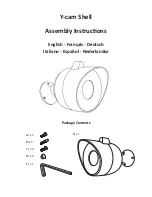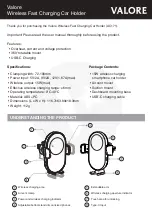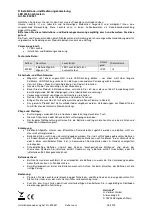
Multiplexer User's Guide
Confidential / Released
s
m
o
b
i
l
e
Mux_guide_v06
Page 12 of 36
30.06.2004
3.1.3 Dependencies between multiplexer channels and restrictions of use
When using the following functions, be aware of possible dependencies between the
different channels. One way of avoiding problems may be to dedicate certain
commands/features to one of the channels or to assure that the application avoids conflicts.
•
Call control: A voice call can be initiated, answered or ended on each channel. See AT
commands like ATD, ATA or ATH.
Please note that ATH terminates each voice, circuit switched data or fax call regardless
on which logical channel ATH was executed, for details see [2].
•
Phonebook access: If you wish to write the same phonebook entry on two different
channels at the same time, please note that the last entry will be stored permanently. All
other data will be deleted.
•
SMS read, write and delete.
•
Time settings: Though the AT commands AT+CALA and AT+CCLK can be used on
either channel, the same time setting applies to all three channels. It is only the alarm
message <text> which may be specific to each channel. The URC “+CALA” will be issued
only on the channel where the last alarm setting was made. For details see [2].
•
Device locks set with AT+CLCK.
•
SIM card access.
•
RF settings.
Example:
•
An ongoing fax call has been established on channel 1. When answering an incoming
voice call on channel 2 or 3 and terminating it, the held fax call will be ended as well.
3.1.4 Functions without channel dependencies
The following functions or events may be ongoing independently on different channels:
•
Unsolicited Result Codes (URCs) will generally be transmitted to all logical channels. For
example, an incoming voice call is indicated by the URC “RING” on all three channels.
Incoming data calls are indicated on channel 1 only.
•
Device information can be queried on a single channel.
•
Signal quality and cell information can be retrieved on a single channel.
•
Further commands that can be used separately on one channel without impact on the
remaining channels: ATZ, AT&F, AT&V, AT+CEER, AT+CMEE.
•
User profile: AT&W stores the current setting of each channel to the user profile, no
matter on which of the three channels the command is executed.
Example:
•
The battery capacity can be queried from channel 2 or 3 while a voice, fax or data call is
made on channel 1.













































